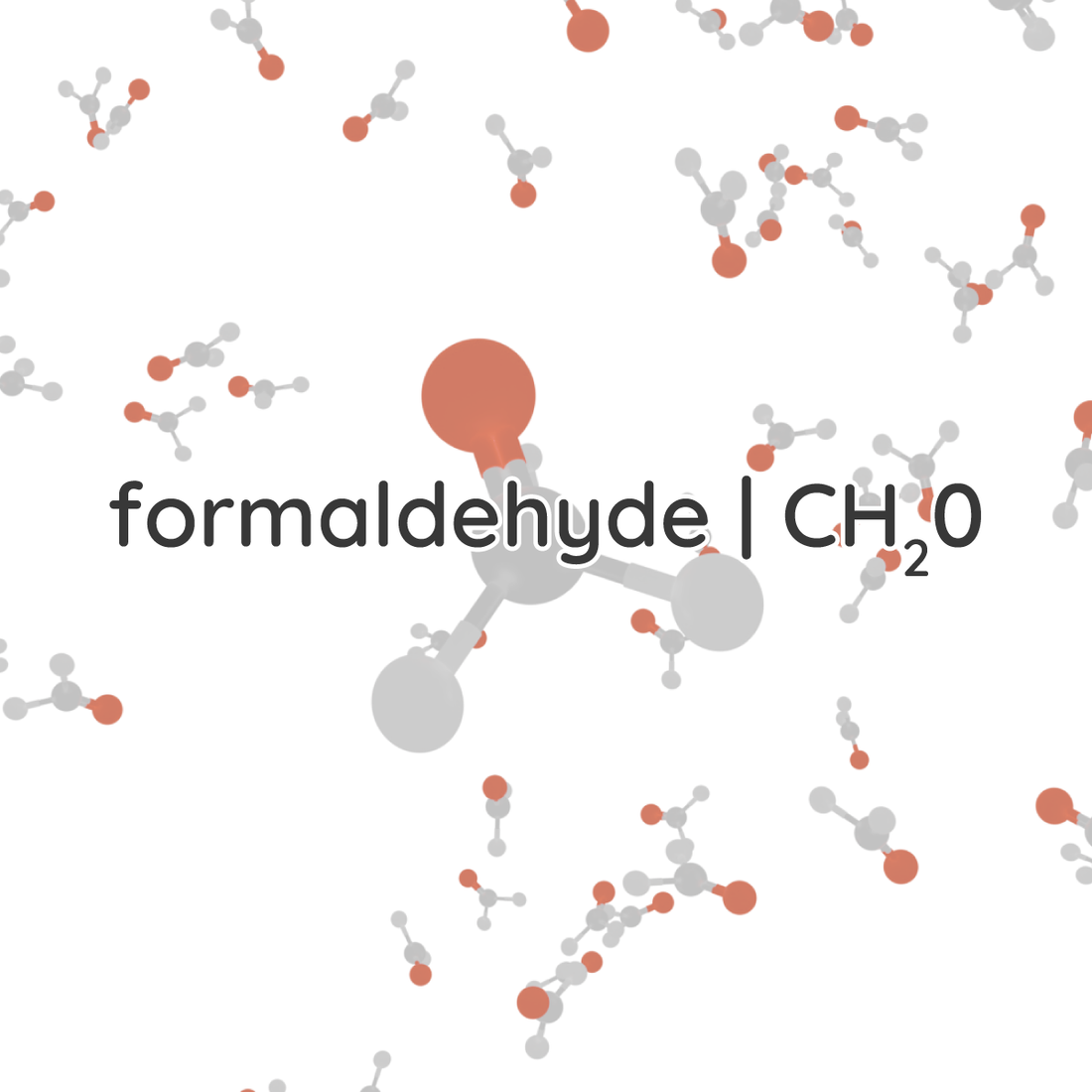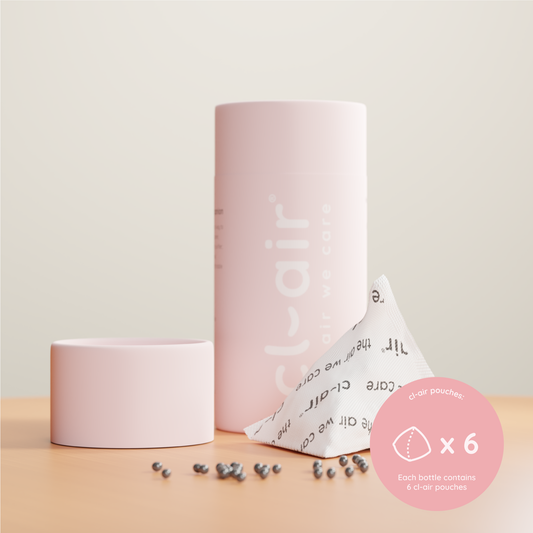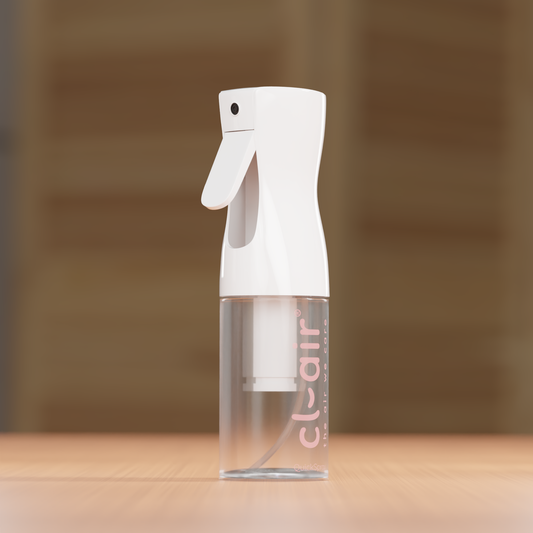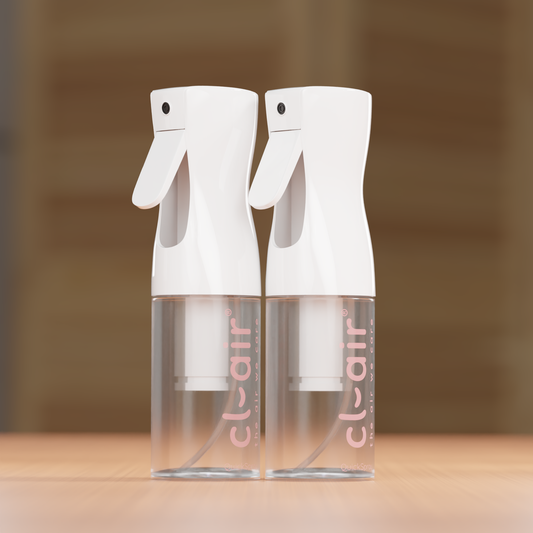What is formaldehyde?
Formaldehyde is a colourless and strong-smelling chemical commonly used in various household products and building materials.
There are 3 main types of formaldehyde in a household:
| Types of formaldehyde | Solution |
| Free Formaldehyde: Formaldehyde present in indoor air due to off-gassing from furniture, paints, and adhesives. | Ensure good ventilation and, if possible, expose the space to direct sunlight. Using a certified air purifier for formaldehyde removal can further accelerate dissipation. |
|
Formaldehyde on Surfaces: Residual formaldehyde that accumulates over time, usually settling on wood and walls. |
Clean with cl-air QuickSpray to neutralise and remove formaldehyde buildup. Tested and proven to remove up to 92.2% Formaldehyde on wood surfaces for immediate action. |
|
Releasable Formaldehyde: Formaldehyde that is gradually released from wood, adhesives, and synthetic materials over time. |
Use cl-air AirShield, a potassium-based formula that neutralises and seals releasable formaldehyde, preventing off-gassing for long-term protection. |
Read more about formaldehyde here.
Remove Formaldehyde Naturally
While formaldehyde can dissipate over time through natural processes, actively removing it from indoor environments often requires additional measures. Some natural processes that contribute to formaldehyde reduction include:
-
Ventilation:
Proper ventilation by opening windows and doors allows fresh outdoor air to circulate, helping to dilute and disperse formaldehyde indoors. -
Houseplants:
Certain plants, like spider plants, snake plants, and pothos, have been suggested to absorb some formaldehyde. However, the effectiveness may be limited, and a large number of plants might be needed for significant impact. -
Sunlight:
Exposure to sunlight can contribute to the breakdown of formaldehyde in the air. However, this process is generally slow and may not provide rapid or comprehensive removal.
Remove Formaldehyde Using Air Purification Products
While these natural processes can contribute to the reduction of formaldehyde, they may not be sufficient, especially in situations where formaldehyde levels are elevated or persistent. We still need a combination of air purification produces to target areas where it has lesser ventilations especially when we are indoors.
-
Formaldehyde-Removal Catalysts (cl-air AirShield):
Employ catalysts, such as zeolites or metal oxides, which can react with formaldehyde, breaking it down into less harmful substances. cl-air uses formaldehyde-removal catalysts, carefully formulated to remove formaldehyde at a very high efficiency. -
Plant Amino Solution (cl-air QuickSpray):
Plant-derived amino solution have a natural ability to break down and neutralize formaldehyde molecules. These amino solution act as bio-catalysts, accelerating the decomposition of formaldehyde into harmless byproducts such as water and carbon dioxide. The amino groups (-NH₂) in plant amino acids actively bond with formaldehyde, forming stable, non-toxic compounds that prevent re-emission. This makes plant amino technology a safe, effective, and eco-friendly solution for long-term indoor air purification. -
Activated Carbon Filters:
Use air purifiers equipped with activated carbon filters. Activated carbon can adsorb formaldehyde molecules, helping to reduce their concentration in the air. -
HEPA Filters:
High-Efficiency Particulate Air (HEPA) filters can capture particles, including formaldehyde. While not designed specifically for formaldehyde, they are part of comprehensive air purification systems. -
Photocatalytic Oxidation (PCO):
Utilize PCO technology, which combines ultraviolet (UV) light and a catalyst (such as titanium dioxide) to break down formaldehyde and other volatile organic compounds (VOCs).
How to choose the right formaldehyde removal for your new home?
Natural processes can contribute to the reduction of formaldehyde, they may not be sufficient, especially in situations where formaldehyde levels are elevated or persistent. We still need a combination of air purification products to target areas where it has lesser ventilations especially when we are indoors.
How is cl-air different from other Formaldehyde removals?
Unlike HEPA filters, cl-air removes Formaldehyde via catalyst that helps to break down into less harmful substances. It can target enclosed areas like book shelfs, cupboards or various types of furniture, especially those that made out of pressed wood or composite wood products.
cl-air is specialised in removing formaldehyde from targeted areas where any air purifiers are not able to reach.





